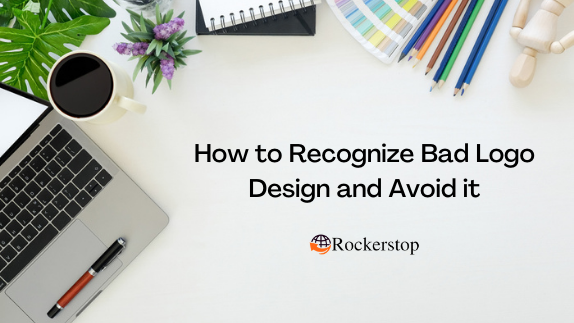Recognize Bad Logo Design
The best designers are conscious of the foremost common mistakes which will happen when designing a logo—mostly because they’ve made those missteps themselves at one point or another during their career—and are now ready to catch poor choices before they create them.
In logo design certain “what not to do” occur more all the time than others, and seeing these fruitless choices in action can assist you sidestep them in your own logo design. Here, we’ve collected the foremost common mistakes in bad logo design, so you recognize what to seem out for. If you’re already guilty of 1 of them, don’t worry: we’ll show you ways to form it better!
1. Obsolete Logos –
Most usual problem with bad logo designs is that they’re using outdated techniques, visuals and effects. The logos which have been created decades ago—and not during a great way. Back within the 1980s and 90s effects like old-fashioned skeuomorphism, 3D gradients, computer graphics and certain fonts were used excessively, which now makes these logos look particularly dated.
How to Avoid it –
If you’re handling an outdated logo, the simplest solution is to offer it a redesign to move it into the 21st century. Sure, retro design is on trend.
2. Too Long –
It’s not that detailed logos are bad, but they’re just not scalable. For large billboards, paintings or vehicle wraps, detailed logos are literally great. If those were the sole places, you’d display your logo, detailed logos would be the norm, but consider how often your logo appears on much smaller, harder-to-see surfaces.
The problem with detailed logos is that they appear awful on small screens like smartphones, also as certain swag and merchandise, like pens or maybe business cards.
How to Avoid it –
If you don’t want to abandon your detailed logo, you don’t need to. A perfectly feasible alternative is responsive logos—designing variant logos for smaller sizes. In other words, keep your detailed logo for giant placements, and have a special one for little placements.
3. Hazy –
Again, if your logo looks great but doesn’t say anything about your brand, it’s still a nasty logo design. One of the goals of logos is to elucidate who you’re and what you are doing, albeit it’s the primary time someone sees your logo. That’s tough, but some particularly bad logo designs offer no information in the least, with ambiguous company names and seemingly random images.
How to Avoid it –
Sometimes the foremost obvious solution is the best: during this case, just add a description! You don’t need to give your whole elevator speech, in fact, with logos, less text is more, but you’ll easily add a couple of words to elucidate what you can offer to customers, or at least your name.
4. Generic Logos –
Logos are best when they’re memorable, while generic logos, or perpetuating an equivalent trend and designs as everyone else, have the other effect. Do what everyone else is doing and there’s an honest chance someone will confuse your brand with another.
The thinking behind generic logos seems logical—copy the logos that folks already like. But after a couple of months or years, the market becomes flooded with logos that are all doing an equivalent thing, and logos that were once unique become nothing more than dime-a-dozen.
How to Avoid it –
The best thanks to safeguard against generic logos are to stay abreast on what everyone else is doing. Check out our guide generic logos to understand which trends are most overused and to-be-avoided.
As we mentioned above, generic logos often start out nearly as good logos, so you’ll not want to abandon all the trends just yet. Just make certain to feature something that stands out.
5. Confusing Design –
Logos with irrelevant images or conflicting themes, logos that artistic look good can still miss their mark with confusing and unconnected imagery. This is a standard problem in any artistic endeavor; what’s within the head of the creator doesn’t always occur to the viewer.
How to Avoid it –
Opt for clarity above all else. You can use any of the strategies we advise above, like familiar icons, easily identifiable images and little text descriptions. It’s always an honest idea to urge a fresh pair of eyes on a design before finalizing it. Creators tend to miss the trees for the forest, so an outdoor perspective can reveal what doesn’t encounter love.
6. Conflicting Themes –
Logos can help to set the frame of mind for your brand. If you’re a significant brand for serious people, you’ll use angular shapes and muted colors to seem more professional. If you’re a tech company striving to return across as futuristic, you’ll use imagery like wire circuits or astral grids to speak of that.
The trouble is when themes are mismatched and you’re building the incorrect feeling for your brand.
How to Avoid it –
Both your imagery and your idiom should echo your branding goals. Using universally-recognized icons and therefore the preferred themes of your clientele may be a short-cut to effective communication.
So these were the unrecognized mistakes that lead to bad logo design and one should avoid it by using these solutions.
